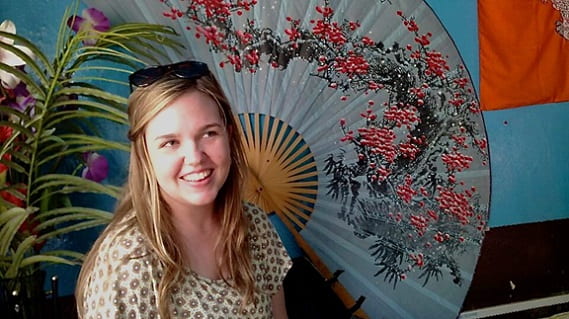
Hanging out at a Local Daba / Momo & Cha
Chili lips, endless chatting, and checking in… with what’s really happening
“I feel like you’re not a chilip – haha.” My friend told me as she was passing me a piece of melon. We were trying a new type of melon she found at the sabji bazaar (vegetable market). “I washed the fruit with tap water,” she said. While most Bhutanese prefer to drink filtered water, they find tap water perfectly usable for small things, like washing vegetables. However, for foreigners (or chilips), a little bit of unpurified water can cause all kinds of stomach problems, even dysentery. While, this example may have gotten a little grotesque, the idea I’m trying to convey is how very much at home I’ve been made to feel here, in Bhutan. Though my blondish hair and pale skin making me a walking attraction, my friends, hosts, and colleagues here treat me like one of the family.
Recently, I went with my friends to pick up their son at school and we stopped at a Zakhang, a small restaurant that serves simple local snacks like potato curry, deep fried chilies, and momos. As I mentioned last time, chilies are a major staple of Bhutanese cooking. You can have cheese with chilies, or potatoes with chilies, or, well, just chilies with another kind of chilies. I have a little bit of a taste for spicy food and I’ve gotten to the point where I can’t stand my breakfast without azaay, chili sauce. Small Zakhangs like the one depicted in the pictures above and below are all over Bhutan. You can barely tell they are there, but if you peak inside a living room, with the door open, and ask, “Momo [dumpling]? Cha [tea]?” You will likely find yourself in a Zakhang, munching on three kinds of chilies and inhaling steaming hot tea from the water boiler in the back.
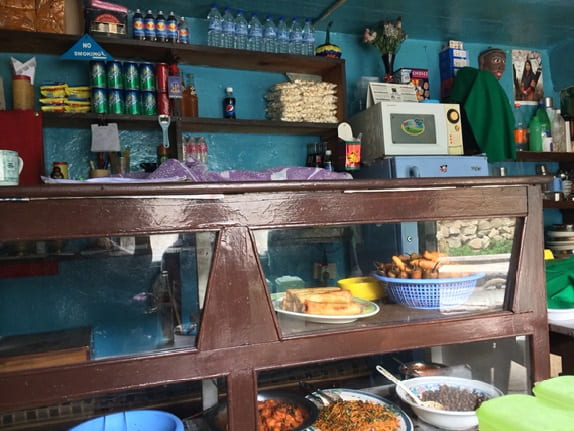
Display of premade snacks – the big fried chilies are on the upper right.
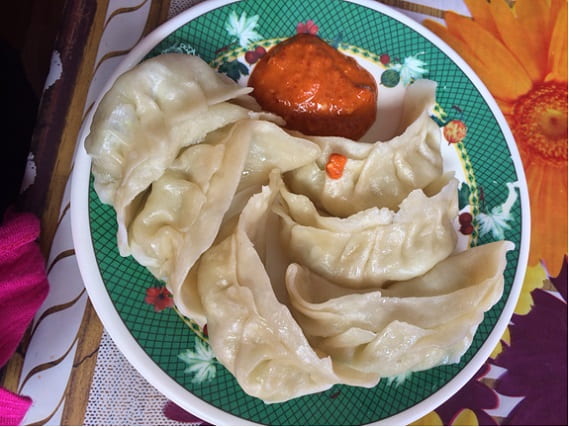
Momos: dumplings filled with meat or vegetables, steamed, not fried. They are my favorite and I like them with chili sauce!
The ways we eat, cook, and take delight in taste are all so personal and particular to our unique ways of being in the world. Food offers us a vibrant illustration of cultural contrast. When Bhutanese style meets western taste, the results can be delicious, surprising, or hilarious! Which is the case with this new coffee shop’s sign:
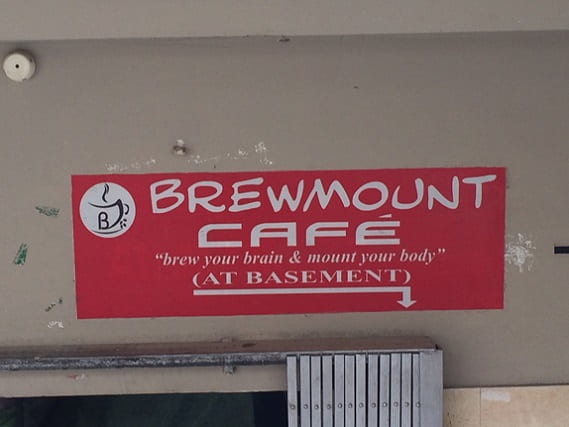
Living and working in a foreign country, especially one as formerly isolated as Bhutan, is a constant balancing act. The longer I am here, the more aware I become of subtler and subtler cultural differences. As I become more aware of the way people think and the way society functions here, the contrast with my old familiar mental patterns becomes more apparent. And, I’m sure I’m changing along the way – adopting new habits, the function of my environment.
I’ve been studying international relations, development, and economics for a long time. I’ve been working internationally for a long time as well, and spent considerable time in Bhutan and other countries that are far from my home base, and the expectations of Americans. Still, sometimes this apparent familiarity with another culture is little more than a gradual numbing, and something can grab my attention and snap me straight to the reality of where I really am.
Yesterday, I was with youth, who were presenting their findings from the Participative Action Research they conducted in the remote village. They had questioned residents from different households about their income, with the aim of identifying the part of the community with the greatest potential and the greatest need for development intervention. The youth had compiled their results and were listing their findings from oh so many detailed conversations with community members. They had made a graph and pointed to the grouping on the lowest end of the scale, listing income and expenditures in Ngultrum (the local currency). Earlier that morning, I had been looking online at one-way tickets from Bhutan to India. I did I double take; the amount listed for annual income per household was equal to the cost of my one-way ticket. In other words, due to the poor infrastructure, market access, and other obstructions that are preventing the development of this region, an entire family in this village is living on less than one dollar per day.
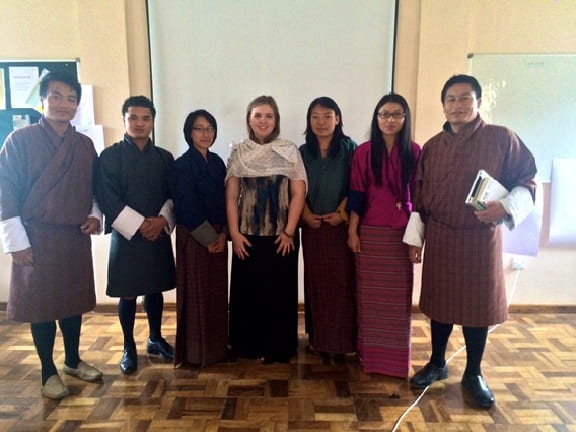
Youth Participative Action Researchers and myself, at a presentation to YDF colleagues. They are all wearing Bhutan’s national dress: Kira for women, and Gho for men.
The process the youth went through to correctly identify the particular challenges, needs, and assets of the village residents was long and arduous. Working in Bhutan, particularly in the context of community development, requires patiently building relationships with the people you work with, more than anything else. I find this to be one of the most obvious cultural differences in the work-world (not that professional relationships aren’t important in the West, of course they are!). Participative Action Research is just as it sounds: participative. Working this way takes a lot of talking, and even more listening. It is based on the premise that the best development solutions are found through actively engaging the project community. They have the best local knowledge of problems, solutions, feasibility, and assets. When that knowledge is collected, analyzed, and combined with a toolkit of economic development models – the research part of PAR – the projects that result are almost destined to succeed.
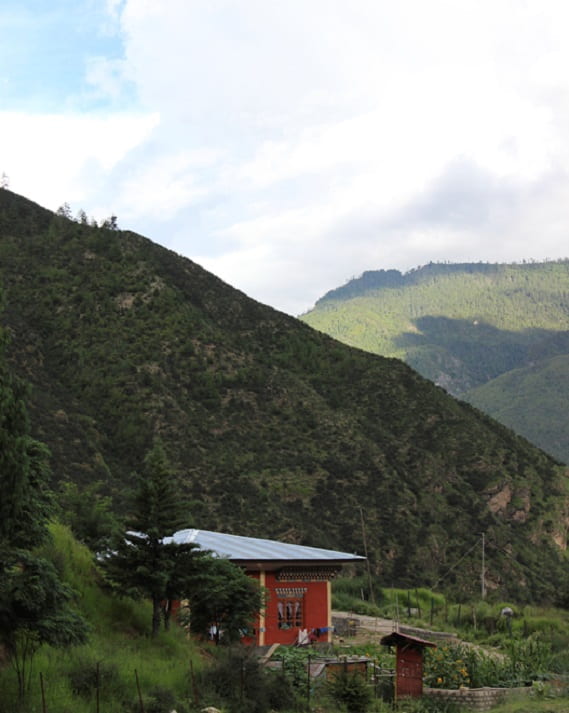
Living in Bhutan: tucked away in the mountains, 1.5hrs walk from the road.